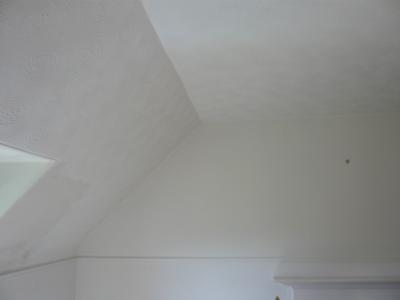plastering over artex
by Nick
(Highlands of Scotland)

Hi Paul
We have bought an old house and it is covered in artex. I want to have a go at plastering over it myself, though I have never plastered before.The room I am going to start with is artexed half way up, above the dado rail.
Do I pva it before starting? If so, how many times?It has previously been painted.
Do I plaster over it whilst the pva is still wet/tacky?
Do I let the first coat of plaster completely dry before putting on another coat and do I pva that inbetween?
Basically as a complete novice, what are the timings in between pva'ing an plaster coats?
I know it may be basic, but this old house is costing a fortune to do up, so I've got to start doing some more work myself.
Thanks
Nick
Answer
Nick,
Yes you need to apply 1 coat of PVA to make sure the plaster adheres. More coats may be needed to control the suction - but it depends upon the paint. Easiest way to determine if you need a second coat is to monitor how quickly the 1st coat dries. If it takes minutes then it is quite porous and needs sealing with another coat. If it takes about 20 minutes to go tacky then that should be fine. If in doubt a second coat will do no harm, and may certainly help by giving you longer working time if it is a large area. As the plaster will firm up for two reasons the set or lack of moisture due to it being sucked out into the wall behind. Sealing the wall properly will ensure that moisture is not sucked out too quickly, however some suction is nice to prevent plaster from sliding around!
The PVA can be applied the day before as the artex provides a rough surface which will act as a good key. If it is really smooth though you need to either apply the plaster when PVA is tacky or if wanting to PVA day before a handful of sand mixed in with PVA will provide a rough surface for plaster to stick to.
Then proceed as follows:
Stage 1 Apply 1st Coat - Flat even Coat, 1-2mm thickness or to cover high points of artex
When it has firmed up (putty like) so that you will not lose the flatness and push it out of shape:
Stage 2 Flatten Ridges – anything over 1mm should be flattened
Immediately follow with
Stage 3 Apply 2nd Coat - Flat even Coat, 0.5 -1mm thickness
When it has firmed up (putty like) so that you will not lose the flatness and push it out of shape.
Stage 4 Trowel Up – Ensure all holes and hollows are filled whist plaster is pliable.
If you have retained the flatness and all the holes are filled, then proceed with next stage, If not go back to the previous stage. If with firm pressure the trowel marks are smoothed out continue with this stage. If you are smoothing out some but creating others then it is too wet, just wait a while.
Stage 5 Trowel Up – Remove trowel marks (side to side over whole wall) and obtain nice even finish.
When some areas are starting to change colour.
Stage 6 Trowel Up – Last remaining blemishes, when plaster is nearly set.
Good Luck
Paul
Click here to read or post comments
Join in and write your own page! It's easy to do. How? Simply click here to return to General Help.
skimming over an artex ceiling
by will
(bromsgrove)
I have an artex ceiling upstairs that i wanted to plaster over, i have started in one corner as a practice as i have never done a ceiling before, I let the plaster go tacky, worked it really nicely and now i have left it for a few hours it looks like the moisture has just been sucked out and the artex is just showing on the surface, faint little bumps are appearing. The plaster was fine when i mixed it and i used a multi finish, does this just mean i will have to do 2 coats?
Answer
Yes, 2 coats for definite over artex - 1 to flatten out to the highest point and then one thin one over the top. Make sure you apply PVA first, the more coats of this you put on the less the moisture will be sucked out of artex. To avoid your arms aching too much you can always apply the PVA the day before - just mix a bit of sand or multi finish into the PVA so that when it dries it is nicely textured to ensure good adhesion.
Join in and write your own page! It's easy to do. How? Simply click here to return to General Help.